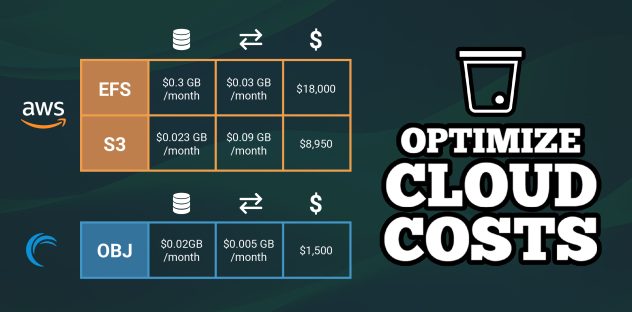Most users envision file storage as a hierarchy of directories and files, but the view behind the scenes is a little more complicated.
Conventional storage devices store data to the disk using a format called block storage. A block storage device breaks the data into fixed-sized blocks and stashes the pieces wherever they will fit. When the data is requested, the system reassembles the pieces to restore the data to its original form.
For hard drives and other conventional storage media, block storage is an efficient approach. Systems tended to read and write in fixed-sized data blocks anyway, so storing the data in blocks makes sense.
However, the block storage model also has some drawbacks. For instance, it takes time to break the data into blocks and put them back together again. Also, the means for tracking and managing the locations of all the blocks on the disk becomes less efficient as the disk size grows to the very large data stores used in cloud services and local data centers. As a result, block storage is still useful for some storage needs, but modern scenarios may require a different approach.
S3-compatible object storage is an alternative option used in many cloud storage environments. In object storage, a file is not broken into blocks but instead is stored as a single object. The object’s location is obtained using an identifier or hash function, which eliminates the need for a complex hierarchical structure. These unique features of object storage allow it to scale more uniformly to very large data sets.
Object storage solutions typically come with built-in fault tolerance and self-management features. The goal is for the details of the storage process to stay hidden from the user. The operating system saves a file, then the underlying storage infrastructure handles the details.
For a real-world look at object storage as part of broader cloud infrastructure, check out our doc on “How to Set Up a Private Docker Registry with Linode Kubernetes Engine and Object Storage.”
Object storage is not right for all workloads, but it’s finding its way into an increasing number of large-scale storage applications and various cloud object storage use cases. Object storage solutions often serve as the backend for websites and social media platforms, efficiently managing unstructured data that might include photo images, videos, text files, and HTML documents.
Object storage is also ideal for some HPC and AI workloads, and it’s a good choice for any situation where data is stored once and infrequently accessed, such as backups, database dumps, and log files. Because it scales easily to large files and data sets, object storage is sometimes used for storing collections of files like videos, engineering models, scientific data, and other cloud object storage use cases. The low cost and administrative efficiencies of object storage make it a good choice for storage that doesn’t require low latency or frequent access.
Earlier this year, we published an ebook on how to get maximum value from object storage in the cloud. You can download “S3-Compatible Object Storage Use Cases” here.






Comments